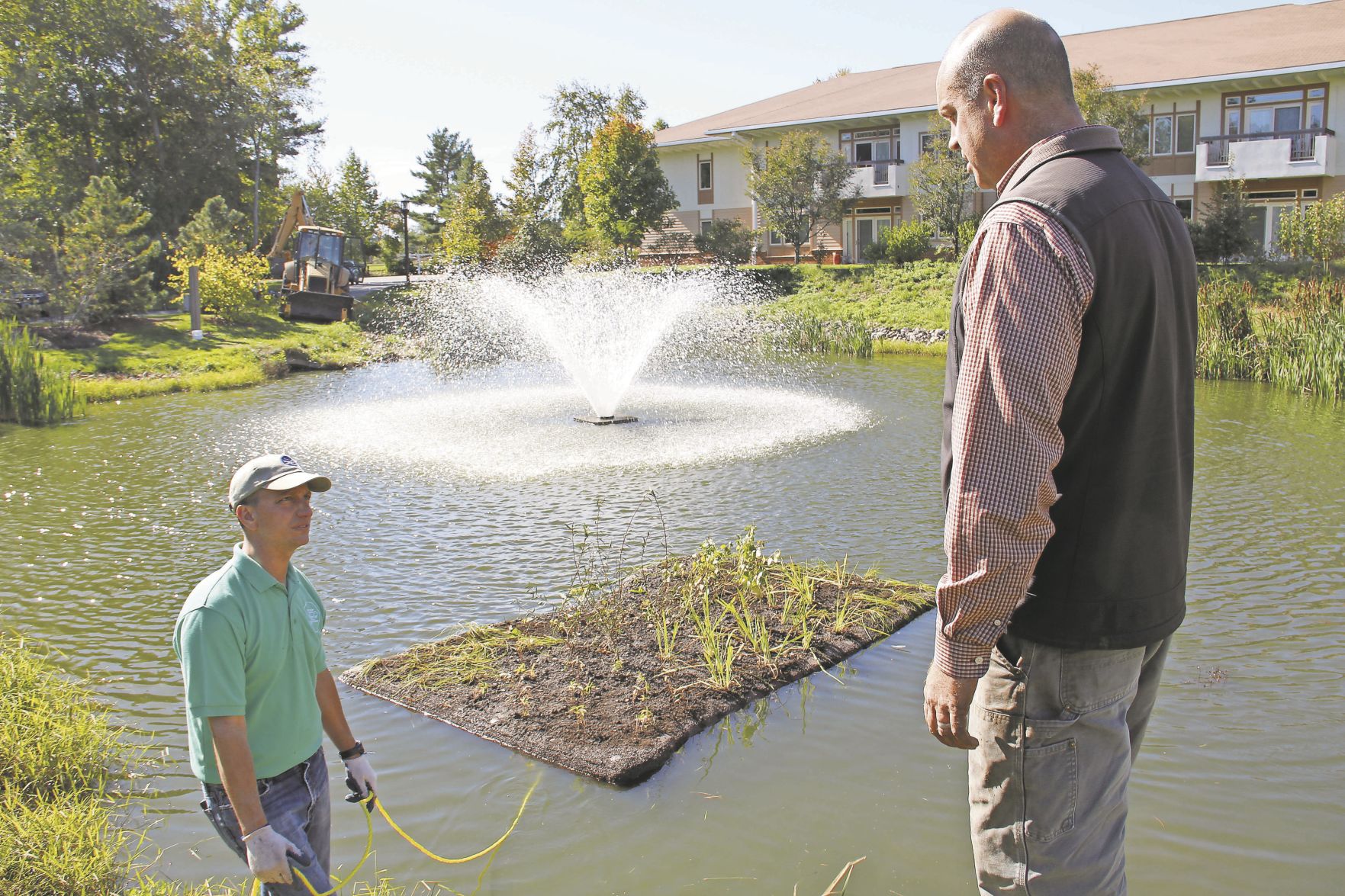The Stony Brook-Millstone Watershed Association recently installed floating wetlands at the Meadow Lakes retirement community in East Windsor and, if successful, this innovative approach to improving water quality may be expanded elsewhere in the watershed.
This pilot project moved from concept to actuality in mid-October as a result of a yearlong partnership between the Watershed and Meadow Lakes, a continuing care retirement community, which is also an internationally accredited arboretum.
Last year, Joe Greipp, the arboretum director for Meadow Lakes reached out for information on the Watershed’s River-Friendly Business Certification program. He was also interested in the Watershed’s experience with this method of improving water quality.
Steve Tuorto, PhD, Director of Science and Stewardship, said the Watershed staff was eager to embark on this pilot project, excited by both its scope and innovative approach.
“We were especially excited that Joe was interested in employing scientific process around the floating wetlands,” Tuorto said. “Measuring the water quality at Meadow Lakes before and after the wetlands are deployed will help assess their usefulness as a tool for restoring water quality.”
He said Greipp wanted to tackle the algae growth in Meadow Lakes’ interconnecting lake and ponds, and suggested building floating wetlands to reduce the nutrients in the water – primarily nitrogen and phosphorus.
Greipp had a secondary goal of decreasing the suspended solids and mitigating the loss of dissolved oxygen in the waterways, which would improve the aquatic life in the ponds and lake.
“The goal is to remove as much nutrients as possible in a limited amount of space, in an aesthetically pleasing feature and without treating the lake with chemicals,” Tuorto said. “Because of the filter matrix, these floating wetlands potentially have the equivalent nutrient uptake of three-quarters of an acre of natural wetlands.”
Tuorto and his Watershed crew explored sources for the floating wetlands, including academic groups and several companies. In the end, his team built a 100-square-foot floating wetland composed primarily of Poly-Flo filter material and marine foam for the lake. He also purchased a 100-square-foot commercially built island to evaluate its price and performance.
Both floating islands were planted with a total of 416 plants, including red twig dogwoods, Asian willows, blue flag irises, water plantains and native grasses. This spring, if all goes as planned, the islands will burst with color, and the plants of various heights and textures will grow and fill in the island surfaces.
The two floating islands are expected to remain in the waterways for many years. If the results are promising, additional floating wetlands will be built and installed, Tuorto said.
Erin Stretz, assistant director of Science and Stewardship, visited the site periodically and sampled the water quality – before and after rainfalls – to ascertain the health of the water and get baseline measurements. She plans on returning to take water samples on Meadow Lakes’ ponds on a regular basis to gather data on the effectiveness of the floating wetlands.
“We have been monitoring the chemistry of the lakes for the past year to get a baseline, and are hoping to see an overall reduction in nutrients in the water with the installation of the wetlands,” Stretz said. “In short, success will be realized if we see a decrease in algal blooms in the next season.”
For more information on this project, please contact Erin Stretz at (609) 737-3735 x17.

